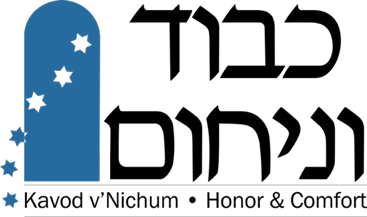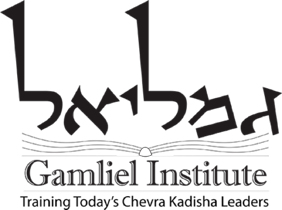2020 Online Conference Poster Sessions
Innovative conference attendees are presenting exciting new ideas as “Posters” in this year’s conference.
4:45 pm EDT, 1:45 pm PDT on Sunday, Monday, and Tuesday
Join the Poster Sessions by clicking Zoom Classroom A3.
Posters are listed here alphabetically by presenter last name.
Click here for a printable list of Poster Titles
(You will need to “rename” yourself in the Poster Session with the number of the poster you want to attend.)
-
-
- 1 Vivien H. Abrams – “Everybody Must Get Stoned!” – Cemetery Art and Symbols
This Poster Session is on part of Vivien’s collection of images from Jewish and non-Jewish cemeteries, along with an open discussion about the symbols that are common and recognizable and those less notable. You will have the opportunity to examine the symbolic themes and engravings and ask questions about different traditions and representations. (These PDF files of images are large – download them by clicking, and then click on the downloaded file to display them from your own disk.)
- 1 Vivien H. Abrams – “Everybody Must Get Stoned!” – Cemetery Art and Symbols
-
-
-
- 2 Bob Evans – Kavod v’Nichum Chevrah Kadisha Online Expertise Database
An online database under development which will allow members of Chevrot to post areas of expertise and contact information which they are willing to share. The database can be queried by those seeking others with specialized knowledge. The database will be flexible, largely user maintained and secure.
- 2 Bob Evans – Kavod v’Nichum Chevrah Kadisha Online Expertise Database
-
-
-
- 3 Matt Harle – A presentation based on my book (in progress): Through a Clouded Lens: Counting the Chevrah, 2019-2020, in which I look at various aspects of the Chevrah Kadisha through the lens of counting the Omer, both in 2019 and now.
-
-
-
- 10 Rabbi T’mimah Ickovits – Songs and Chants from Sefer Maavor Yabbok
The prayers for those lingering are some of the finest psalms, verses, and songs used for healing help the gosseset heal into death. We will 1) invite protection as our ancestors did – using a Psalm in Hebrew and English 2) review the chants, psalms and versus in this sacred end of life tool kit 3) the 112 versus to cross the river (into death) are exceptionally gorgeous and moving versus from Torah and liturgy weaved together line by line. Its the highest. In my experience its designed to help the Neshamah exit into G!D’s loving arms, as it were. If enough people are interested in learning this we will put a class together.
- 10 Rabbi T’mimah Ickovits – Songs and Chants from Sefer Maavor Yabbok
-
-
-
- 4 Susan Kramer – Death Yentas
Taking back the negative spin on Yenta and giving it a positive spin. Death Yenta – an informal local expert in the area of planning, dying, death, mourning, grief and afterlife. Death Yentas have knowledge, an understanding of tradition, and the ability to create a personal relationship. We are working to create a new program inside of Kavod V’Nichum in local communities. Let’s flip the switch on death from desperation to inspiration.
- 4 Susan Kramer – Death Yentas
-
-
-
- 5 Rabbi Rebecca Kushner – Since Covid-19 has severely impacted the sacred mitzvah of Taharah, I have been pondering the use of the Mikvah and its transformative potential for an end-of-life ritual. How can the Taharah liturgy be adapted to this purpose? How should the kavannot be structured in order to offer comfort to those who immerse? My intention is to develop a liturgical unit that might serve for others in a similar situation, especially when Taharah is not possible. I welcome thoughts and suggestions.
-
-
-
- 6 Alice Lachman – Posters for Taharah: A Collaborative Gallery
Taharah Liturgy Posters (on the walls in the taharah room) – Some chevrot use posters in the taharah room for guiding the ritual and also for training purposes. The advantage of the poster or enlarged and laminated flip chart is to avoid using handouts or copies of manuals while doing the taharah. Dedicated reader(s) of the English and/or Hebrew liturgy will hold the manual instead. The posters are placed on the wall of the taharah room or on a flip chart stand and sanitized as needed after the ritual. Here are a few examples used by different Chevrot Kadisha around the country.
-
- Tikvat Israel Congregation, Rockville, Maryland (Susan Challis: sechallis@verizon.net)
- Chevra Kadisha of Sonoma, California (Nancy Dott: 1ndotti@gmail.com)
- Richmond Beth El Cemetery (Vickie Weitzenhofer: cweitzenho@aol.com)
- Chevra Kadisha Kavod of Oahu (Alice Lachman: alachman@hawaii.edu)
- Adas Israel Chevra Kadisha (Toni Bickart: tonibickart@gmail.com) Mounted manual pages:
- 6 Alice Lachman – Posters for Taharah: A Collaborative Gallery
-
-
-
- 7 Rabbi Steve Moss – New Class on Ma’avor Yabbok
Rabbi Moss is beginning a weekly Zoom study class of the classic text Ma’avor Yabbok. Join him during this poster presentation to learn more about it and sign up. You can also email him at ravdoc1@gmail.com.
- 7 Rabbi Steve Moss – New Class on Ma’avor Yabbok
-
-
-
- 11 Nicky Silver snd Karen Stern – Bereavement Chevrot: Creating the Next Steps
This poster is a deepening of a discussion about creating Bereavement Teams presented in Nicky Silver’s plenary on nechamah.- Nicky’s shortened guide for comforting mourners (this link will download a Word document)
- 11 Nicky Silver snd Karen Stern – Bereavement Chevrot: Creating the Next Steps
-
-
-
- 8 Laura Turbow – New business debut
- ShivaScribe is making its debut at this conference.
Shiva is a nearly perfect practice, honed over thousands of years. It offers space for grieving, reflection, crying and laughter. Much of its power lies in the sharing of stories. All that is missing is somebody to collect them. ShivaScribe lets you reframe the ritual, collecting stories to preserve, not only to better remember your loved ones, but to embrace the concept of “l’dor v’dor”—from generation to generation. If ShivaScribe existed when your ancestors passed, imagine the trove of information that would now reside with your family, passed down through generations. Imagine the depth of history you would hold.
-
- Still Life Stories is a new business that helps people reflect on their lives and tell stories that are inspired from their personal objects. As Jewish people, we are all about stories, we read the torah again and again every year. As we have accumulated meaningful treasures – everything from ritual objects to two tickets to the winning ballgame, we can fill the pages of our book of life with stories. Who are we if not our stories? As this is a new business, we welcome comments, suggestions and most of all – your stories of the most important objects in your life.
- 8 Laura Turbow – New business debut
-
-
-
- 9 David Zinner – How Will We Know When It’s Safe to Do In-Person Taharot?
This poster will help formulate questions that will lead to criteria that need to be developed that will enable Chevrei Kadisha to determine when they feel it is safe enough to resume doing taharot in funeral homes.
- 9 David Zinner – How Will We Know When It’s Safe to Do In-Person Taharot?
-

